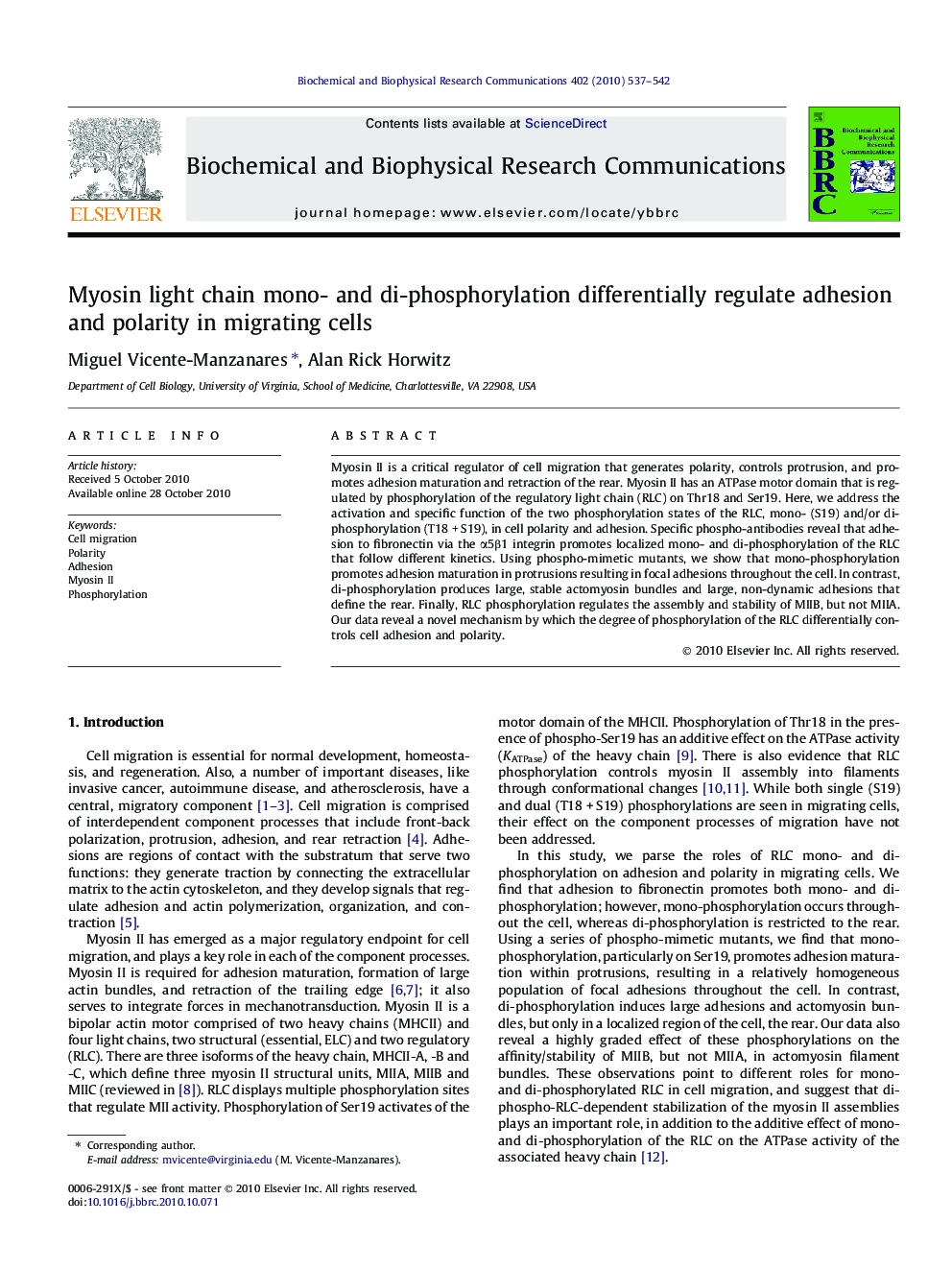| Article ID | Journal | Published Year | Pages | File Type |
|---|---|---|---|---|
| 1931407 | Biochemical and Biophysical Research Communications | 2010 | 6 Pages |
Myosin II is a critical regulator of cell migration that generates polarity, controls protrusion, and promotes adhesion maturation and retraction of the rear. Myosin II has an ATPase motor domain that is regulated by phosphorylation of the regulatory light chain (RLC) on Thr18 and Ser19. Here, we address the activation and specific function of the two phosphorylation states of the RLC, mono- (S19) and/or di-phosphorylation (T18 + S19), in cell polarity and adhesion. Specific phospho-antibodies reveal that adhesion to fibronectin via the α5β1 integrin promotes localized mono- and di-phosphorylation of the RLC that follow different kinetics. Using phospho-mimetic mutants, we show that mono-phosphorylation promotes adhesion maturation in protrusions resulting in focal adhesions throughout the cell. In contrast, di-phosphorylation produces large, stable actomyosin bundles and large, non-dynamic adhesions that define the rear. Finally, RLC phosphorylation regulates the assembly and stability of MIIB, but not MIIA. Our data reveal a novel mechanism by which the degree of phosphorylation of the RLC differentially controls cell adhesion and polarity.
Research highlights► Adhesion to fibronectin via the α5β1 integrin promotes mono- and di-phosphorylation of the RLC. ► Mono- and di-phosphorylated RLC form with different kinetics and have distinct subcellular distributions. ► Mono-phosphomimetic RLC induces adhesion maturation throughout the cell; di-phosphomimetic RLC generates large adhesions and thick bundles that define the rear of the cell. ► RLC phosphorylation regulates the assembly and stability of MIIB, but not MIIA.
